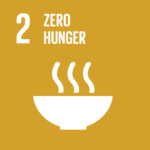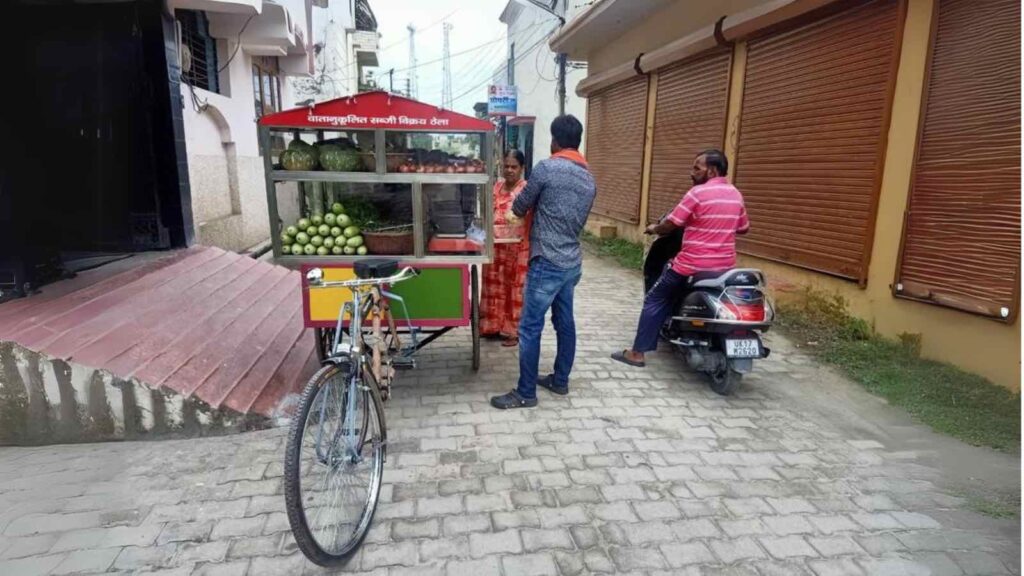The air-cooled new innovation is helping these vendors preserve their goods for longer, reducing waste and increasing their earnings.
In India’s bustling markets and narrow streets, street hawkers are a common sight, pushing their carts laden with fresh fruits and vegetables. But for decades, these vendors have faced a significant challenge: the rapid spoilage of their produce due to the scorching heat. Now, a new innovation is helping these vendors preserve their goods for longer, reducing waste and increasing their earnings.
RELEVANT SUSTAINABLE GOALS




The Challenge of Perishable Produce
Whether in metropolitan cities or rural villages, vendors selling fruits and vegetables from pushcarts are part of the everyday landscape. These hawkers rely on fresh produce from wholesale markets, often sold out in the open under the harsh sun. As temperatures rise, particularly during the summer, the quality of the vegetables deteriorates within hours, leading to spoilage.
It is estimated that for every 10°C increase in temperature, the spoilage rate of vegetables increases two to three times. This forces hawkers to sell unsold produce at drastically reduced prices or discard it entirely, resulting in significant losses. For many, it’s a difficult situation—one that threatens their livelihood.
A Game-Changer: The Air-Cooled Vegetable Cart
A solution to this long-standing issue comes in the form of an innovative air-cooled vegetable cart developed by IIT Roorkee. Designed under the government-backed RuTAG Crossfyre platform of Manthan, this new cart features a cooling system that helps preserve fruits and vegetables for two to three days.
This technology is not only energy-efficient but also environmentally friendly. Using an evaporative cooling method, which circulates cool, moist air through the cart’s storage area, the system maintains a lower temperature and higher humidity. A simple battery powers the cart’s cooling components—a DC pump that sprays water over cooling pads and a fan that circulates the air. Vendors can recharge the battery at home each night and operate the cart throughout the day, while a 10-15 liter water tank keeps the cooling pads moist.
Impact on Vendors and Livelihoods
The benefits of this air-cooled cart are substantial. Vendors like Madan Dass, who has been using the cart, note the immediate improvements in their day-to-day operations. “The cart keeps my vegetables fresh for longer, which means less waste and more sales,” he shared. Field tests have confirmed that the temperature inside the cart can be reduced by 10-15°C, while humidity remains at an optimal 85%, extending the shelf life of the produce.
For street vendors, this innovation means they can sell fruits and vegetables over multiple days without losing quality. As a result, their earnings increase, and they face fewer financial losses from spoiled goods. The cart also helps vendors maintain hygiene standards, as the produce is stored in a more controlled environment.
The air-cooled cart is not just a practical solution for vendors; it is also an environmentally conscious one. By reducing the need for refrigeration and utilizing an eco-friendly evaporative cooling system, the cart consumes minimal energy and produces no harmful emissions. It represents a step forward in promoting sustainable practices in India’s informal economy.
This innovation is particularly suited to states like Uttar Pradesh, Rajasthan, Maharashtra, and Bihar, where dry and hot climates contribute to rapid spoilage. With the potential to be widely adopted, the cart offers hope for reducing food waste on a national scale.
As the air-cooled vegetable cart gains traction, the lives of street vendors could change dramatically. This simple yet effective technology allows them to sell fresher produce over longer periods, maintain hygiene, and significantly improve their livelihoods. In the grander scheme, it contributes to sustainable urban practices by reducing waste and offering an eco-friendly solution.
Lead image courtesy of Department of Hydro and Renewable Energy Indian Institute of Technology Roorkee
You may also be interested in :
Asia’s Food System Faces Triple Threat from Contamination Amid Climate Change





